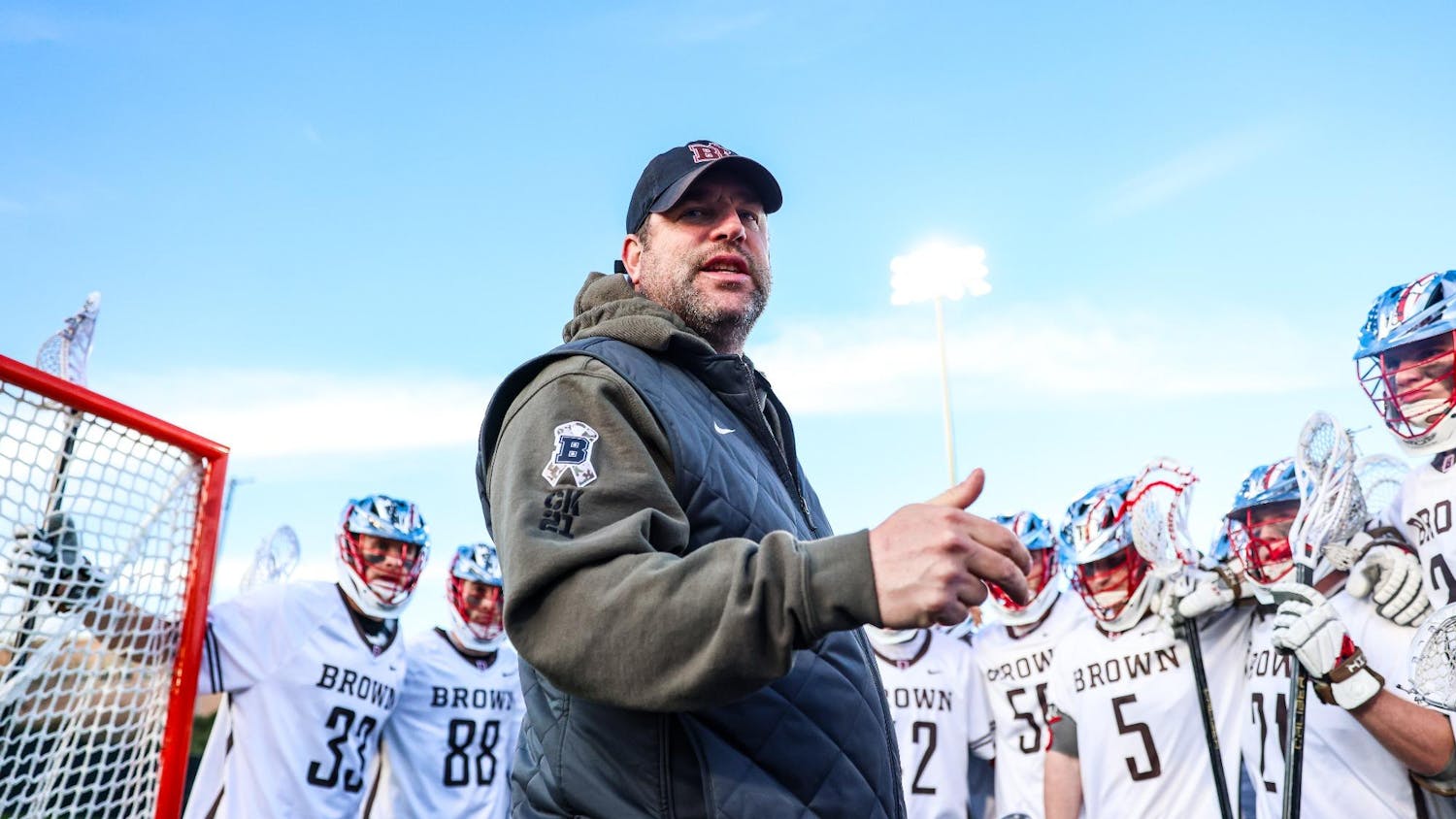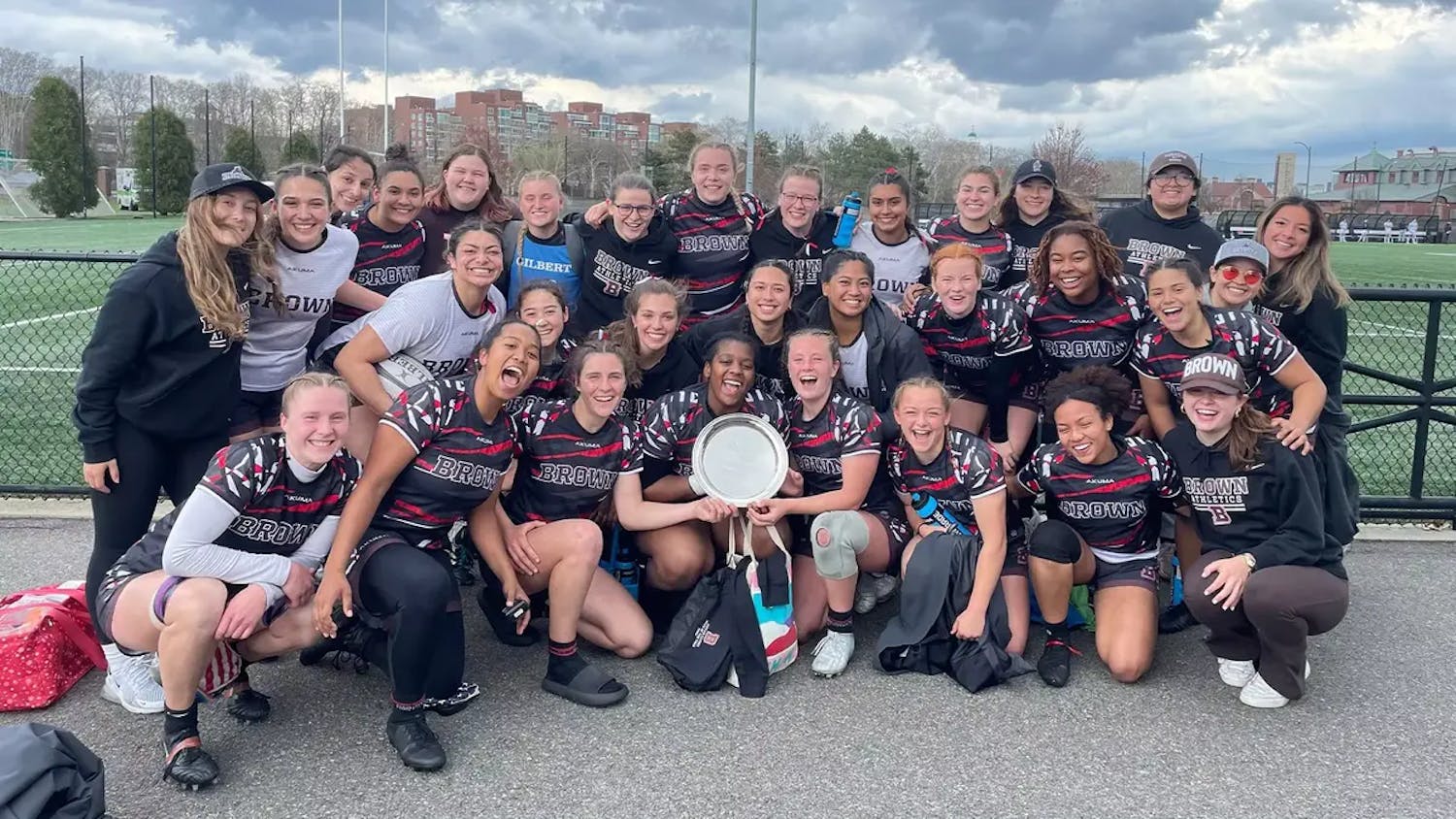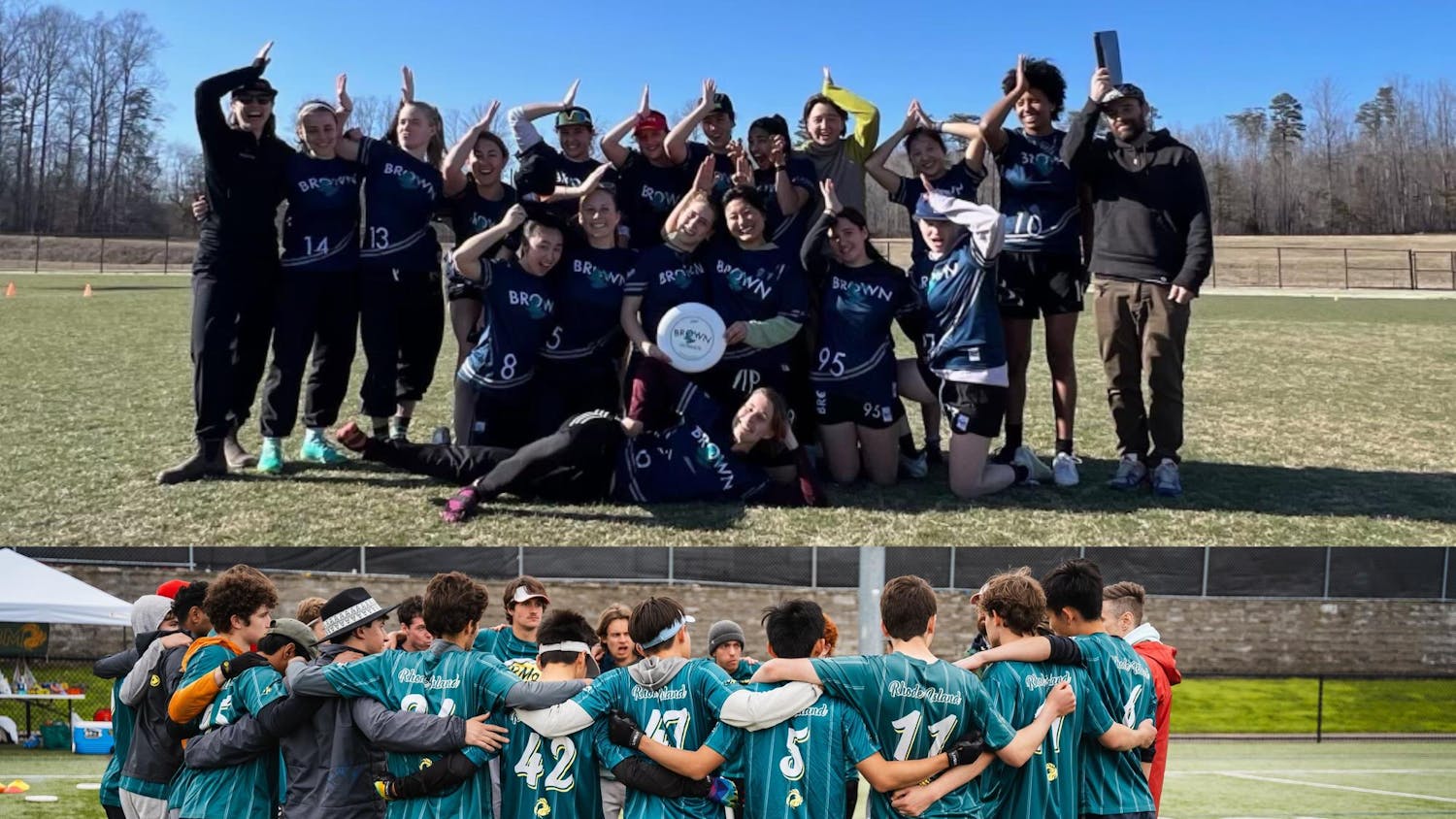Until Saturday, no Brown athletic team had competed for 388 days due to the suspension of sports during the COVID-19 pandemic. But with a victory over the University of Rhode Island and a sweep of all four races, women’s crew had an impressive showing in Brown’s first athletic competition since March 2020.
Despite the cancellation of the Ivy League’s spring season, which bars conference competition, teams may still participate in local competition in adherence to state guidance.
Coaches, administrators and players were elated that competition could resume, even if the season is still far from typical. “It's amazing just seeing them back on the water,” said Interim Director of Athletics Colin Sullivan. “There's still a lot of protocols around the competition, but you could just see a different sort of look on our student-athletes' faces."
Women’s crew coach John Murphy was excited to start off strong. “It was a good win,” he said. “And (URI is) tough. URI has some really good athletes there.” He also noted that, while they were only present in a very limited capacity, he appreciated having some fans back. “People on shore still had to observe social distancing, but we could still hear them cheering,” Murphy said.
“There's nothing like race day,” said rower Hannah Yazdani ’22. “It was honestly just really emotional being back.”
Her teammate, Bridget O’Callahan ’22, shared a similar sentiment. “It was incredible,” she said. “We've been training hard through this whole semester and through the whole fall semester not even knowing whether or not it was going to lead to racing, so it was great to get the chance to be out there on the water and (be) racing again.”
For Yazdani, key challenges of this season have been staying emotionally level and dealing with uncertainty. “I feel like this year, the mindset has really been (to) manage the highs and lows, not expect anything but be ready if we are going to race,” she said. “We found out the Wednesday before that we were racing and we were ready.”
Yazdani has also had to manage an unpredictable schedule. “For the most part you can plan the year and you know exactly what you're doing, when you're racing, if you qualify for NCAAs (and) when you go,” she said. “Now I could be told tomorrow that I'm racing in two days and I have to be prepared for that.”
Significant public health protocols were put in place before the race could actually take place. “Everyone had to be tested 48 hours before on our team and on URI,” Murphy said. “The deal was that we could have no interaction with (URI’s athletes) at all.”
Many of the rules and regulations teams have to follow come not from the conference but rather from the Brown administration and its guidelines. “As much as the Ivy League provides guidelines you're still subject to campus policies and approvals,” Sullivan said. “Much like our return to practice and activities plans, we also presented return to competition plans and they were sport-specific.”
These plans outline a number of protocols for athletes. Masks are required at all times except when competing. Athletes have to be tested 48 hours before and 48 hours after competing through Brown’s testing program. Locker rooms are not available for athletes to use. There are also protocols pertaining to travel: Buses are at partial capacity with athletes distanced and wearing KN95 masks. Eating on buses is not permitted.
Athletes have felt the impacts of the protocols, but they have made the best of the situation nonetheless. Crew-specific protocols include socially distanced on-land workouts and having each rower be assigned their own oar.
In abnormal conditions, athletes have relied on their teammates to stay motivated. “Motivation had to be much more internal,” O’Callahan said. “It was just coming from each other and from my teammates.”
She also emphasized that the pandemic has left her with a new outlook on the ability to compete. “Being away from the boathouse for so long really makes you appreciate even just practicing,” she said. “I was just so excited to be back in the boathouse and then so excited to be back on the water. It's something that we obviously take for granted.”
Given the nature of crew as a sport, Murphy was confident that the risks of competing were low. “There's no contact and there’s quite a bit of distance (between boats),” he said. “You're outside, so going by everything we've read about and heard about, that should be safe.”
Murphy said that the team has been working to schedule more competitions, but have had to navigate Brown’s complex protocols. “As for racing, we can't travel more than 40 miles,” he said. “We've been invited to a number of races which we could not attend.”
Still, the team is searching for opportunities and is optimistic they’ll be able to compete again. “Finding opponents is difficult but there are a lot of teams that are communicating with us,” he said.
Teams other than women’s crew hope to compete in the near future. “There's other (athletic competitions) in the pipeline, not to the point where we can announce them yet, but we are looking at competitions possibly for this weekend,” Sullivan said.
Athletes were optimistic about getting the chance to compete again, but acknowledged that nothing is guaranteed. “I really hope so but I know that we have to prioritize safety,” Yazdani said about the possibility of racing again.
Still, O’Callahan felt confident about the chances of racing again. “We have teams that there's the potential to race against going forward and so hopefully (Brown) can work out a plan to make that happen,” she said. “But we don't have anything set in stone.”
Murphy is hopeful that the team will be able to compete in the NCAA championships in Florida in late May. “I'm just hoping we can get a bid and then hoping Brown will say okay,” he said.
Sullivan said that he could not make any promises about whether or not women’s crew would be allowed to travel if they were to get an NCAA championship bid, but he did not dismiss the possibility. “That's really an unknown right now. There's no guarantees, let me say that,” he said. “But (the NCAA championships) are far enough off that as we continue to work through this, as more people get vaccinated, no, we're not ruling those out.”
Recently, Penn became the first Ivy League school to resume local athletic competition. According to Sullivan, different Ivies have been working together to discuss plans to return to competition, even if schools can’t compete against one another.
“As a league we're all working together,” he said. “We're continuing to have conversations on a regular basis trying to figure out what type of success (schools) are having.” Ultimately, though, Sullivan will make decisions in Brown’s best interest, with regard to local guidelines.
While the return to competition has prompted excitement for many, even more enticing is the prospect of a fall that moves closer to normalcy, in athletics as well as broader campus life. Sullivan pointed to President Paxson P’19’s recent announcement on requiring students be vaccinated before returning to campus as a particular cause for optimism. “I just like the fact that athletics is being mentioned in it,” he said. “This is a step in the right direction toward competition and I anticipate Ivy League competition” in the fall.”
Correction: A previous version of this article referred to Colin Sullivan as interim assistant director of athletics. In fact, he is currently serving as interim director of athletics. The Herald regrets the error.

Peter Swope is the senior editor of digital engagement for The Brown Daily Herald's 133rd Editorial Board. He previously served as a Sports section editor and has also written stories for University News. Peter is a senior from New Jersey studying history.





